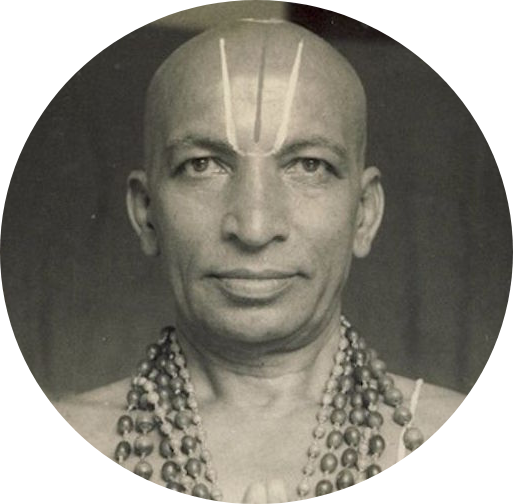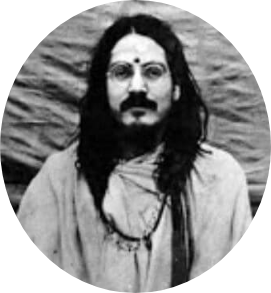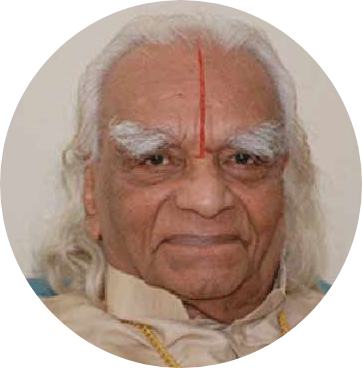Mail : rk@abyogimarga.in
HISTORY OF YOGA
Yoga is an Ancient Indian philosophy and way of life, where complete harmony between our Body, Mind and Sole is achieved by doing Asanas, Pranayama and Meditation. Yoga was developed by Indus Sarasvati Civilization, can be tracked back over 5,000 years, but some researchers think yoga may be up to 10,000 years old, but still there is no exact time to say when yoga started.
The word Yoga means everything has become one, from being just a piece of creation you move to become the creator.
- The word Yoga was first mentioned in the oldest sacred texts, the Rig Veda.
- The first Systematic presentation of yoga is written by Sage Patanjali “Yoga-Sutras” in Second century and “Patanjali is often called father of Yoga”.
- A few centuries after Patanjali, Yogi Masters created a system of practices designed to rejuvenate the body and prolong life, they developed Tantra Yoga, with radical techniques to cleanse the Body and Mind to break the knots that bind us to our physical existence.
- In 1800s and early 1900s, Yogi Masters began travel to the West, attracting attention and followers.
- This begin in 1893 where “Swami Vivekananda” wowed the attendees with his lectures on Yoga and universality of the world’s religions in Chicago.
- With the work of Great Guru’s “Tirumali Krishnamacharya”, “Swami Sivananda” and other Yogis, In 1920s and 1930s Yoga was strongly promoted in Ancient Bharata – India.
- In 1924 Tirumalai Krishnamacharya opened “first Hatha Yoga School in Mysore” and produced three students that would continue his legacy and increase the popularity of Yoga: B. K. S. Iyengar, T K V Desikachar and Pattabhi Jois.
Types of Yoga:
- Karma Yog – the path of action, where all religious and ethical duties are carried out.
- Jnana Yog – the path of knowledge, through contemplation and the study of spiritual texts.
- Bhakti Yog – the path of devotion which means surrender of the Self to God.
- Raj Yog – Raja Yoga is the royal path of self-discipline and practice, is based on the eight limbs of yoga as delineated by Patanjali.
Sage Patanjali’s Definition of Yog:
“Yogas Chitta Vritti Nirodha”
It means that yoga is the removing of the fluctuations of the mind.
Yoga is not a religion, it is a way of living that aims towards a healthy mind in a healthy body. Yoga is the stilling of the mind until it rests in a state of total and utter tranquility, so that one experiences life as it is: as Reality.
One experiences life through the clearest of lenses — lenses not colored by thoughts of good or bad, or mine or yours. When the fluctuations of the mind are totally removed, we are at one with everything and all that is Yog.
Patanjali’s Yoga Sutras:
The literal translation of “Yogas Chitta Vritti Nirodha” is as follows:
- YOGA – To yoke, to join, to unite
- CHITTA – Consciousness
- VRITTI – Fluctuations
- NIRODAH – Quieting Of
It’s quite impossible to remove the fluctuations of the mind because the mind is always thinking — that’s what it does.
“Experts estimate that the mind thinks between 60,000 – 80,000 thoughts a day. That’s an average of 2500 – 3,300 thoughts per hour. … If we were able sell each thought, we would be rich in no time”.
Ashtanga Yoga and Hatha Yoga
Ashtanga Yoga:
Ashtanga yoga first focuses on self, and then moves on to physical postures and meditation.
In Sanskrit “Ashta + anga” is Ashtanga. “Ashta” means Eight and “Anga” is limbs so it means Eight Limb path. Ashtanga yoga is based on Yoga Philosophy of Patanjali. It is a specific yoga tradition, but at the same time Ashtanga Yoga can be seen as covering all aspects of yoga within any yoga tradition.
Ashtanga Yoga is often called Patanjali Yoga, referring to Maharishi Patanjali, the ancient author of the famous Patanjali yoga sutras that describe Ashtanga Yoga. Historians place the writing of these scriptures at around 200 B.C.,
The Eight limbs of Ashtanga Yoga:
1. Yama – A work on the inner dimensions through five different guidelines:
- Ahimsa – Non-violence or non-infringement. Avoiding harm to living creatures. Thought, speech, and action.
- Satya – Truths. Developing a quality of honesty and keeping the truth towards ourselves and others.
- Astia – Non-accumulation: limiting desires according to needs.
- Brahmacharya – Control of desires: control of the power that draws consciousness towards sexuality and food.
- Aparigraha – Lack of greed: lack of jealousy of the property or success of others. A situation in which the senses can be diverted from their objects and brought under control.
2. Niyama – A work on external measurements through five different guidelines:
- Suche– purity/cleanliness of the external and internal: keep the body and environment clean, healthy diet, earn your bread honestly. Also, the cleanliness of thoughts, maintaining positive recognition.
- Santosha – Satisfaction, contentment: Accepting changing situations in life with equanimity and joy on your part.
- Tapas – A state in which consciousness and senses are trained by the different disciplines, against their basic nature and experiencing difficulty and suffering.
- Samadhi – reading and observing the instructions of the Holy Scriptures.
- Ishvarahpernandiyam – Submission to God.
3. Asana – body posture in practice. The posture should be stable, pleasant, and comfortable. Through stability in the body, you can create quiet and conscious stability.
4. Pranayama – the development of control over the energy of life, by the ability to control breathing. “The sources say that Prana and Apana (two out of five currents of the life force moving within the body) are made equal by maintaining a ratio of equal inhalation and exhalation and by tracking the breath through the nostrils with the mind. If you do so gradually, the mind will be under control.” (There)
5. Pratyahara – control of the senses. The gathering of the senses inside and the ability to divert them from the external objects. According to Pattabhi Jois, the meaning of Pratihara is that wherever you look, you see God.
6. Dharana – Concentration. Focusing the recognition on an internal or external object.
7. Dhyana – Meditation. The ability to pause the consciousness on the object of concentration. According to Pattabhi Jois: “For Dhyāna, you have to sit with your back straight with your eyes closed and focus on the bridge of the nostrils, and if you do not do that, you are distracted. (there).
8. Samadhi – A supreme state in which consciousness unites with God.
Ashtanga Yoga Benefits
- Makes body more flexible
- Cleanse and detoxifies the body
- Improves health of the lungs
- Improves blood circulation
- Improves power of concentration
- Builds patience
- Helps gain confidence
- Gives strength to fight stress and tensions
Hatha Yoga
Hatha yoga starts with physical postures that eventually lead you to a better meditation practice.
Hatha Yoga is an ancient Tantric system of physical practices exclusively designed to raise the Kundalini energy. This branch of yoga is the foundation of all physical asana practices that are prevalent in the modern world.
The primary purpose of Hatha Yoga is to induce deep relaxation and
restore balance to the body, so the yogi can sit in meditation. In this process there are three stages:
Asanas: Postures are the first stage that helps us to take care of our bodies by maintaining optimum health, thereby enabling us to live our day-to-day life smoothly.
Pranayama: Breathing Exercises: Pranayama is the next stage. The breathing as per Yoga is based on ‘prana’ (life) the vital energy, which is the source of our life. The yogic breathing exercises help us to improve our health and allow us to attain optimum mind- body balance.
Meditation: The first two stages prepare the body and mind for meditation. Meditation helps us to quieten our minds, reduce our stress levels, and helps us to heal our body.
The word hatha means wilful or forceful. Hatha yoga refers to a set of physical exercises (known as asanas or postures), and sequences of asanas, designed to align your skin, muscles, and bones. The postures are also designed to open the many channels of the body—especially the main channel, the spine—so that energy can flow freely.
Hatha is also translated as ha meaning “sun” and “tha” meaning “moon.” This refers to the balance of masculine aspects—active, hot, sun—and feminine aspects—receptive, cool, moon—within all of us. Hatha yoga is a path toward creating balance and uniting opposites. In our physical bodies we develop a balance of strength and flexibility. We also learn to balance our effort and surrender in each pose.
Hatha yoga is a holistic path which includes discipline, cleansing techniques. These techniques are Shatkriyas, Asanas, Pranayama, Mudras and Meditation.
Hatha yoga serves two main purposes simultaneously. First is physical and the second one is spiritual.
To put it another way, Hatha yoga would strengthen your physical health initially and give spiritual benefits eventually.
Hatha yoga is about how to conquer worldly requirements of the body such as hunger, thirst, and sleep. It amazingly explains how to overcome the effects of heat and cold. It helps restore your health occasionally when you are exposed to seasonal flu, fever or any diseases.
Hatha Yoga Benefits:
- A Hatha yogi doesn’t need warm clothes in winters.
- It strengthens your immune system miraculously.
- Helps preserve your youth.
- Negates the effect of old age and provide longevity.
- You can recover from diseases without taking drugs.
- Skin remains glowing and hair are grey even at the age of hundred.
- It provides perfect health and a strong and fit body.
- Keeps your spine supple and nerves healthy.
- It increases flexibility by increasing the elasticity of connective tissues.
- Works on the whole nervous system.
- It is a very good workout if you want to lose weight.
- Hatha yoga gives the siddhis.
- The old sages have attained marvellous powers by practising it.
This two Types “Ashtanga and Hatha Yoga” are two sides of the same coin!
No matter what style of yoga you choose to practice, you will likely see improvements in many areas of your health in Body and Mind.
“Hatha Yoga teaches us to use the body as the bow, asana as the arrow, and the soul the target”.
~B.K.S. Iyengar

Guru - Tirumali Krishnamacharya
Sri Tirumalai Krishnamacharya (1888-1989) was a Master of Yoga who also held seven academic degrees, including Ayurveda, Law, and Philosophy. In 1915, Krishnamacharya heard about Ramamohana Brahmachari, a Tibetan yogi, who lived in a cave at the foot of Mount Kailash with his family and decided to go looking for him.
Krishnamacharya reported that he stayed in the cave with his guru Rama Mohan Brahmachari for seven years, mastering various aspects of yoga, including the yoga sutras, the therapeutic use of yoga and how to use yoga to stop the pulse.
This was said to have continued until 1918 when Rama Mohan Brahmachari instructed Krishnamacharya to leave for his native Mysore, start a family and begin teaching yoga to others. Krishnamacharya subsequently taught hundreds of students in Mysore, including Sri B K S Iyenger and Sri K. Pattabhi Jois.

Legendary guru Ramamohan Brahmachari
Rama Mohan Brahmachari is a legendary guru, who lived in a Himalayan mountain cave near Manasa Sarovar in Tibet with his wife and three children. He taught yoga and asanas to his many disciples, and is thought to have mastered 7000 asanas. As well as teaching the yoga of Patanjali’s Yoga Sutras, it is said that Rama Mohan Brahmachari studied the mythical ancient yogic text, the “Yoga Korunta” by Vamana Rishi. Rama Mohan Brahmachari is now best known for teaching his student Krishnamacharya about the early traditions of Ashtanga Yoga.

Yogacharya B.K.S.Iyengar Guruji,
Yogacharya B.K.S.Iyengar Guruji, (1918 – 2014) Bellur, Karnataka, India, Indian teacher and popularizer of Yoga, a system of Indian philosophy, Was a living legend who has taught yoga in a unique way to all his students. He finds the meaning of the yoga sutras by his practical search and regular practice of yoga. Thus, he has helped all to experience the wisdom of the yoga sutras. His style of teaching yoga is called “Iyengar Yoga” At the age of 16, he was introduced to yoga by his Guru Sri T. Krishnamacharya. At the age of 18, he was sent to Pune, Maharashtra by his guru to teach and preach yoga. He won three of India’s highest civilian honours: the Padma Shri (1991), the Padma Bhushan (2002), and the Padma Vibhushan (2014).
